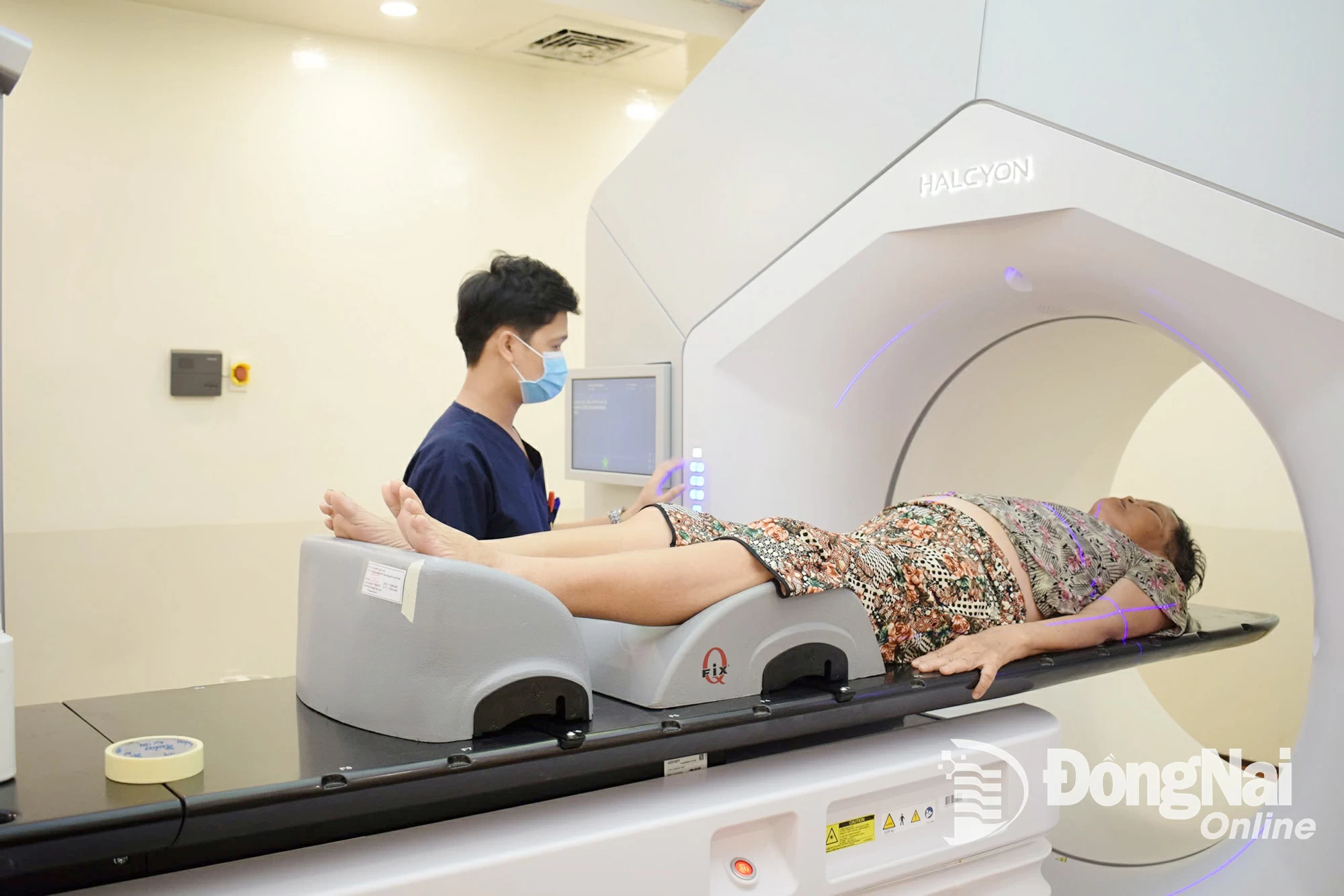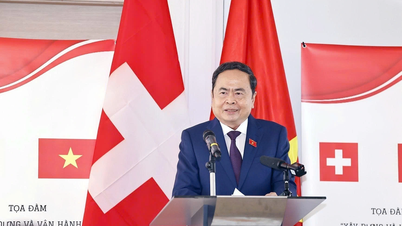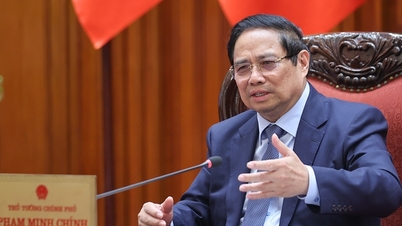Dr. DUONG THANH TAI, a medical physicist, former employee of Dong Nai General Hospital, currently working at Jaeger Group (USA), in charge of clinical work at Abben Cancer Center, Spencer Hospital and June E.Nylen Cancer Center of Jaeger Group (USA), emphasized: a promising direction in this field is targeted radiation therapy (TRT).
 |
| Dr. Duong Thanh Tai. Photo: NVCC |
* When the radiation dose is predicted in advance
* Can you tell me more about TRT therapy?
- In this method, the radioactive drug is attached to a specific molecule that can recognize cancer cells. When introduced into the body, this compound will concentrate at the exact location of the tumor, emitting radiation to selectively destroy malignant cells. At the same time, it minimizes damage to surrounding healthy tissue.
* With 15 years of experience in cancer radiotherapy, what difficulties do you see in treating cancer with TRT?
- One of the biggest challenges in cancer treatment with TRT today is how to determine the actual radiation dose that the tumor and healthy organs actually absorb after the drug has been introduced into the body. If this question is answered, it will help doctors adjust the dose more accurately, improve treatment effectiveness and minimize side effects for patients.
This is also the goal of a study conducted by my colleagues and I, recently published in Frontiers in Oncology. This is a prestigious international journal from Switzerland, specializing in publishing clinical and preclinical research in the fields of cancer diagnosis, treatment and biology.
* Can you elaborate on the content of your research?
- Previously, to estimate the dose in TRT, patients had to undergo multiple SPECT/CT scans at different times after drug injection. This was both time-consuming and impractical in many hospitals. The research we conducted has provided a simpler and more effective solution. That is, using PET/CT images taken before treatment to predict radiation dose distribution using Monte Carlo simulation - a highly accurate computer simulation technique for calculating radiation dose. Thanks to this process, doctors can know in advance how much radiation dose each voxel (the smallest volume in a medical image) will receive if a radiopharmaceutical is used before treatment begins. That opens up the possibility of "tailoring" the dose to each patient, instead of applying "one dose for all" as is currently the case.
 |
| Cancer patients are treated with the most modern Halcyon accelerator radiotherapy system at Shing Mark University of Medicine and Pharmacy Hospital. Photo: Huu Chat |
Opportunities for Vietnamese nuclear medicine
* How does this open up opportunities for cancer treatment in Vietnam?
- Although TRT and personalized dose simulation techniques are still new concepts in Vietnam, the potential for future applications is huge. With my current knowledge and skills, I am willing to share my experience and cooperate with domestic research groups and hospitals to develop this field together. Vietnam has a very good team of doctors and scientists , with just a little more international connection, I believe we can catch up with the trend of personalized treatment in nuclear medicine. From there, we aim for the ultimate goal of saving more patients with more precise treatment methods.
* Dong Nai currently has 2 hospitals with Oncology departments: Dong Nai General Hospital and Shing Mark University of Medicine and Pharmacy Hospital. How do you evaluate the application potential of these 2 hospitals?
- In Dong Nai province, cancer radiotherapy has been deployed quite early. Dong Nai General Hospital started radiotherapy for cancer patients in 2009, contributing significantly to improving the quality of health care for local people and neighboring provinces. By 2021, Shing Mark University of Medicine and Pharmacy Hospital will continue to develop this spearhead with a modern Halcyon system and a well-trained staff. This is also the first place in Vietnam to deploy the Halcyon system - one of the most advanced radiotherapy machines today.
Before doing my postdoctoral research in Canada and working in the US, I spent about 10 years directly implementing and supervising radiotherapy activities at both hospitals. I played a key role in implementing and optimizing the intensity-modulated radiation therapy (IMRT) technique. This is a modern method that helps increase the accuracy of dose distribution, minimize damage to healthy tissue, and improve the quality of life for cancer patients.
I hope that in the near future, this personalized TRT method will soon be deployed in Vietnam in general and in Dong Nai in particular, contributing to improving treatment effectiveness and reducing costs and efforts for cancer patients.
* Thank you, doctor!
Huy Hoang (perform)
Source: https://baodongnai.com.vn/xa-hoi/y-te/202507/ca-nhan-hoa-dieu-tri-ung-thu-bang-lieu-phap-phong-xa-trung-dich-d091c26/

























![[Photo] National Assembly Chairman attends the seminar "Building and operating an international financial center and recommendations for Vietnam"](https://vphoto.vietnam.vn/thumb/1200x675/vietnam/resource/IMAGE/2025/7/28/76393436936e457db31ec84433289f72)










































































Comment (0)